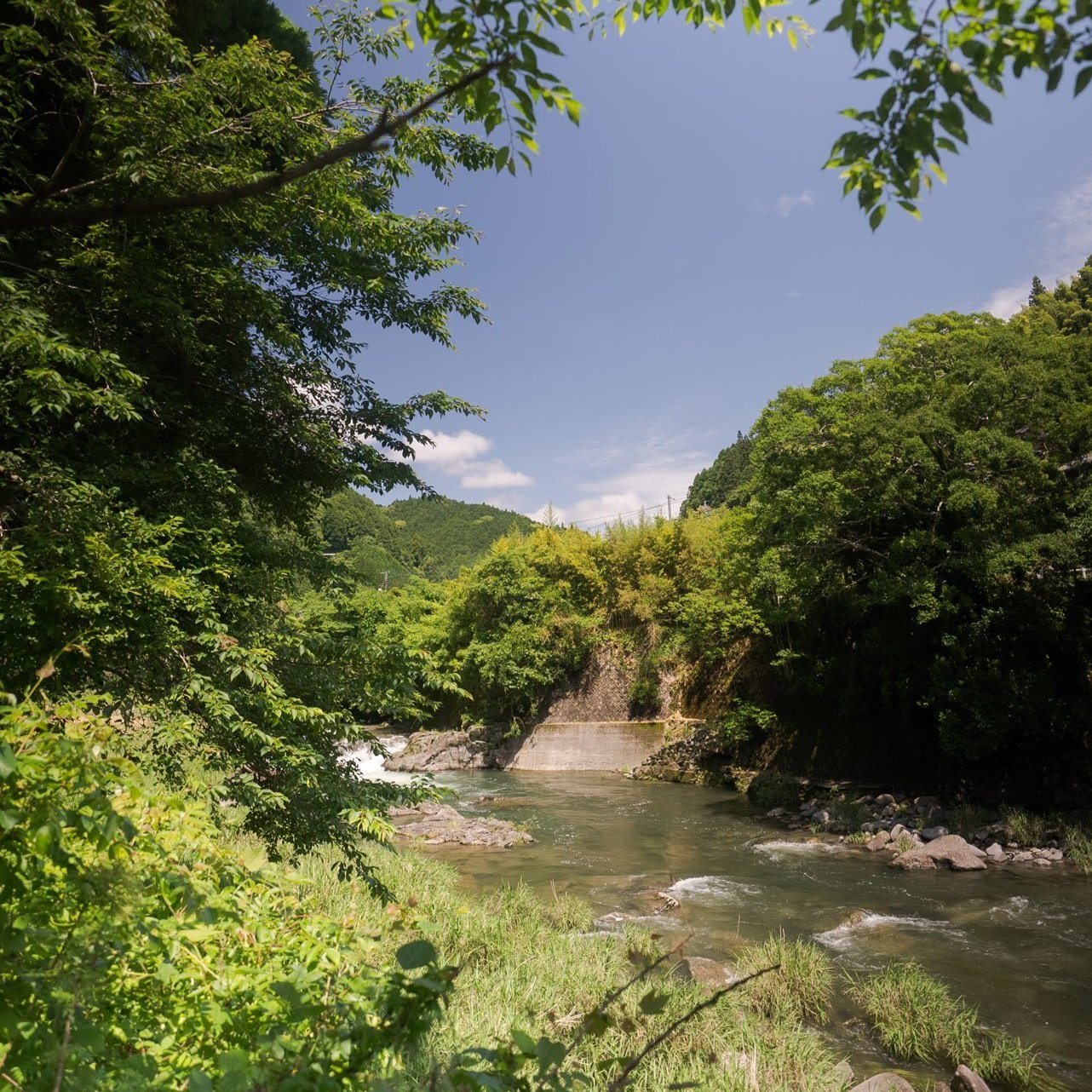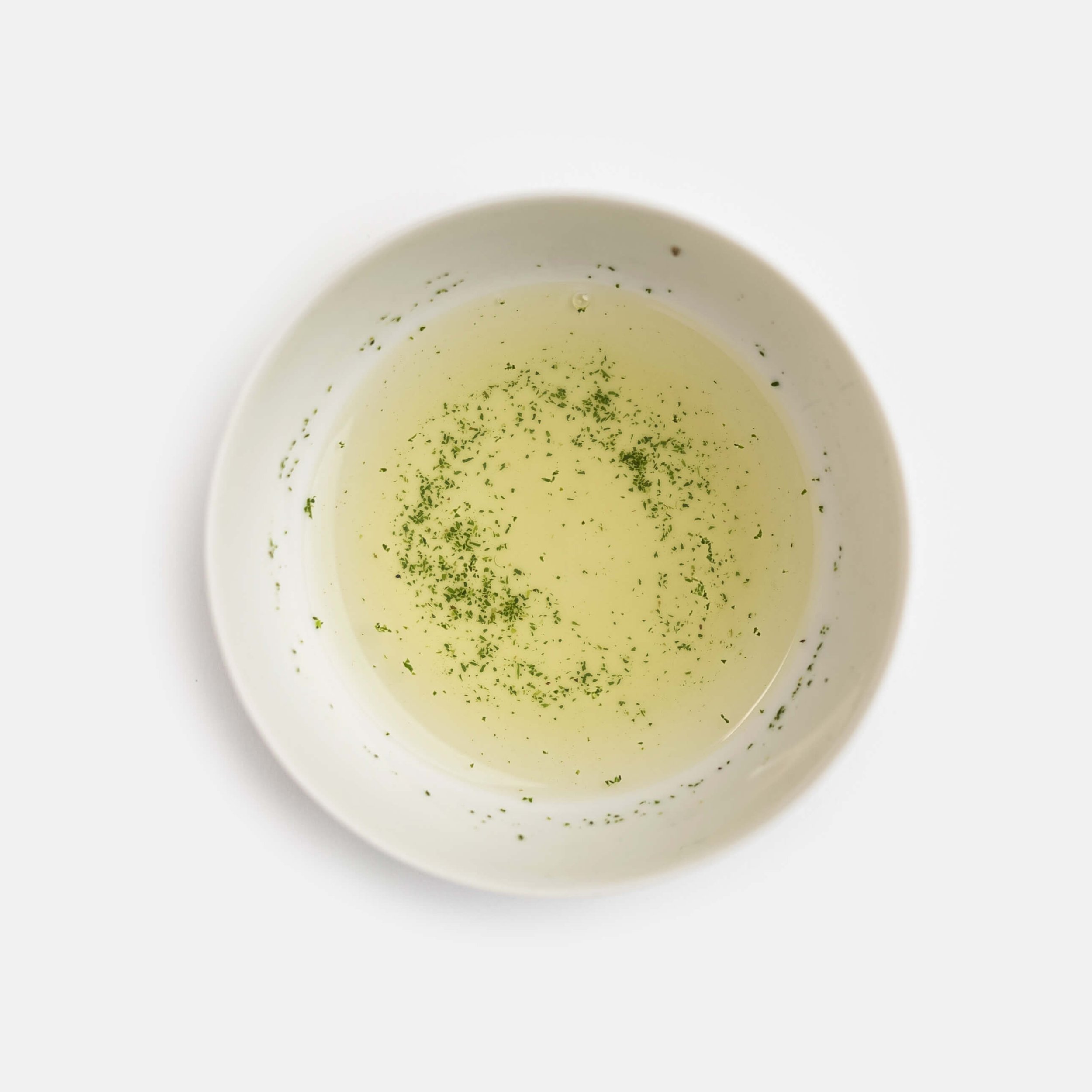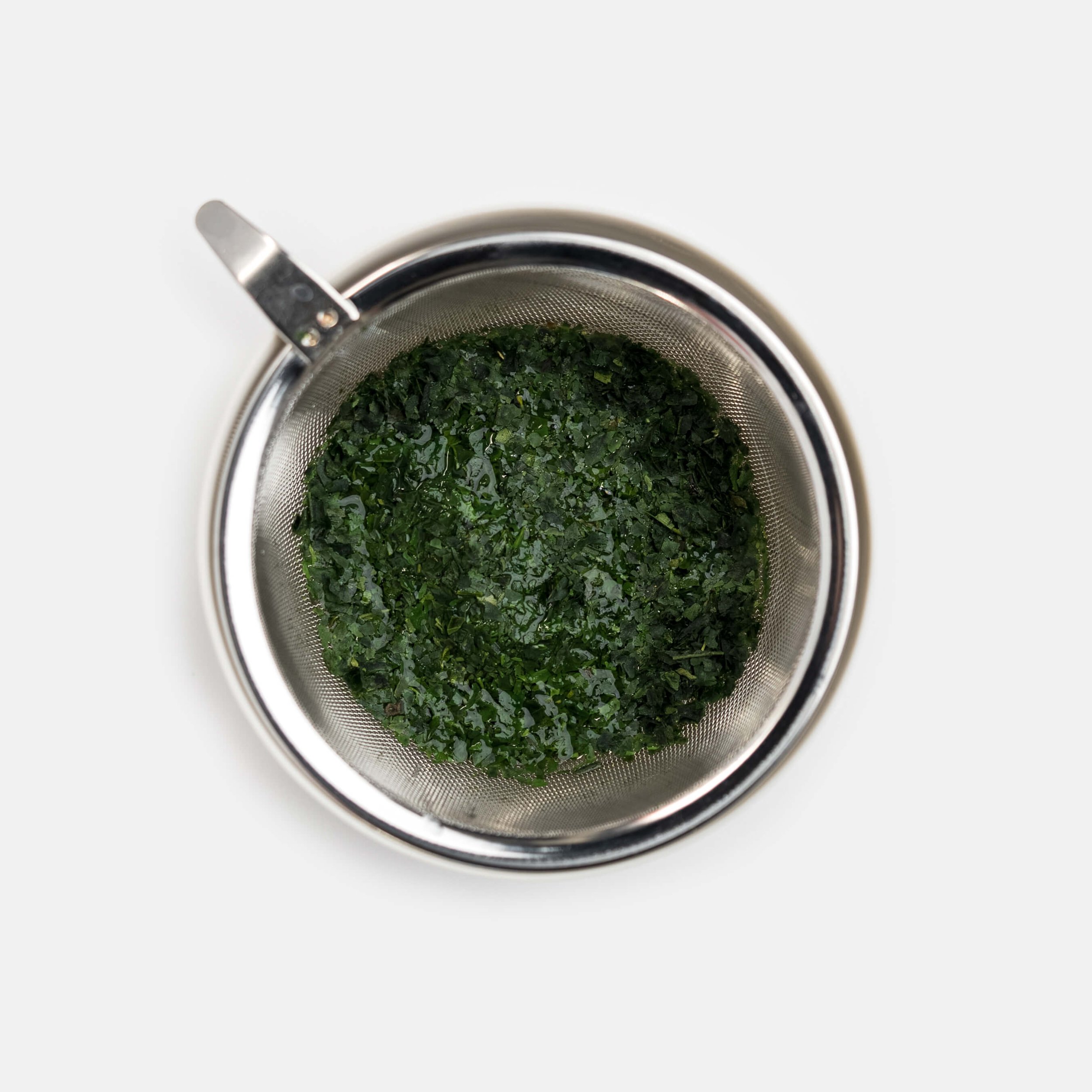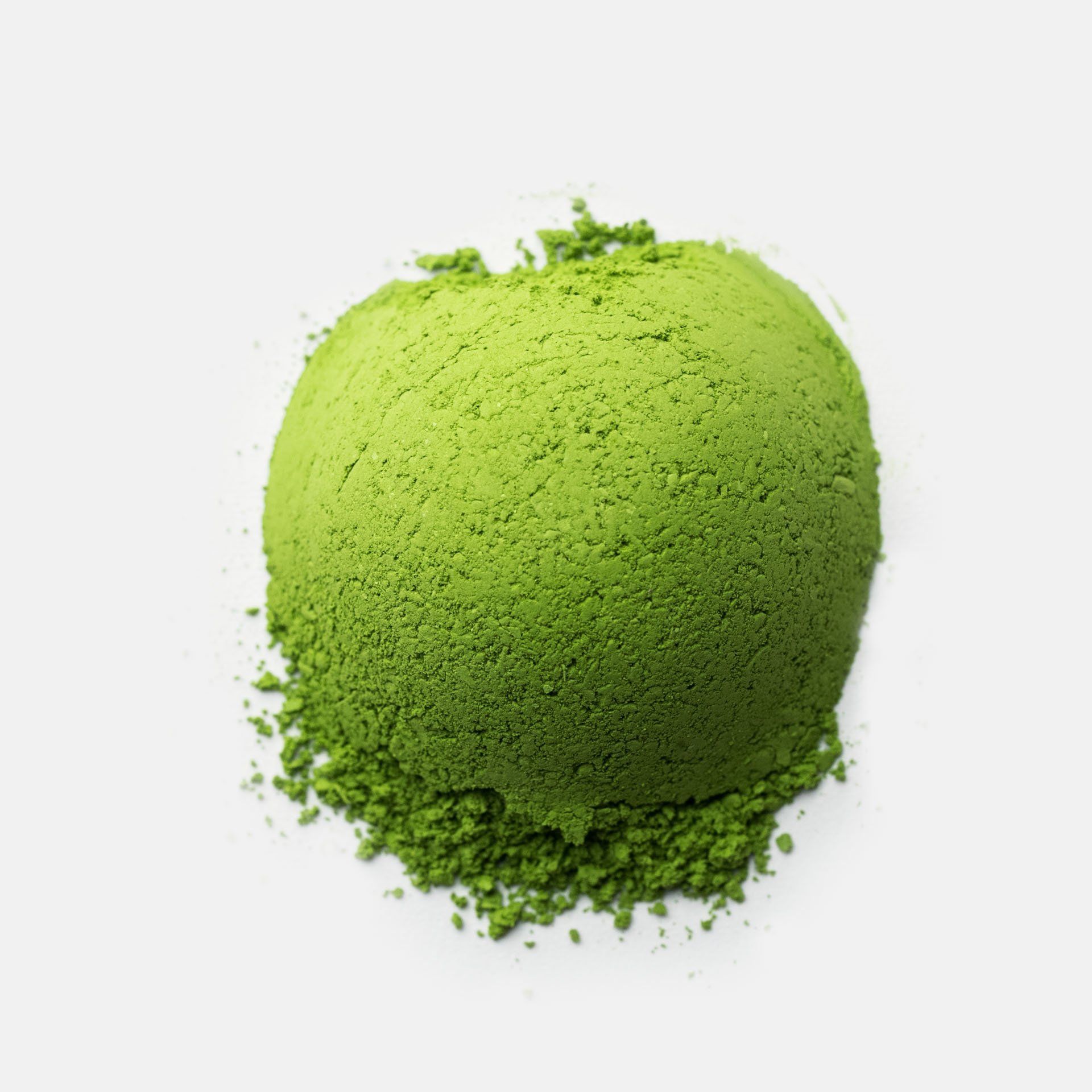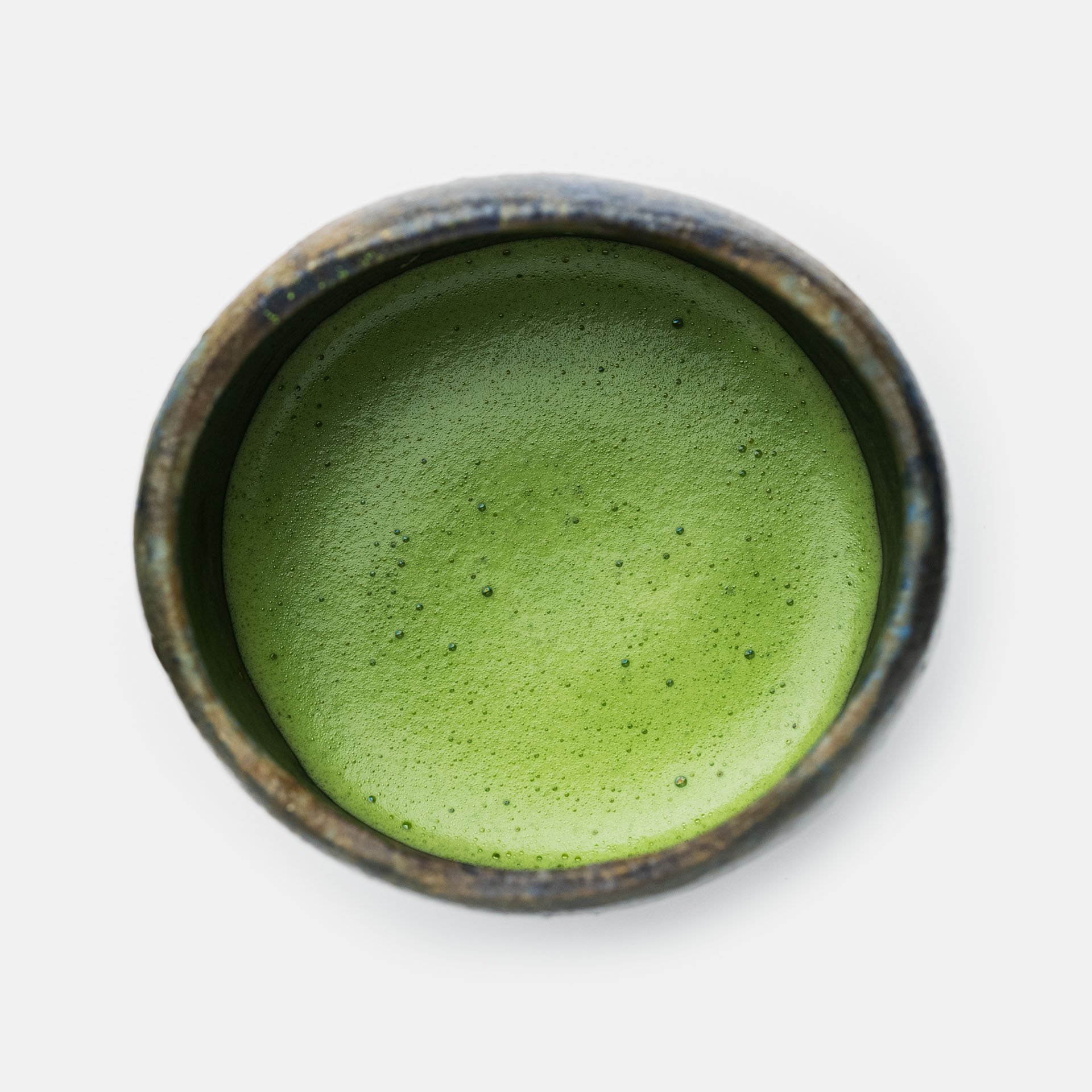About this Matcha
Dry aroma reminiscent of egg-custard pastry made noticeably floral when wet. Subdued in color, natural rather than electric green. Lighty tannic but an assertive level of herbal astringency. This Matcha is exciting to examine the difference between the tactile sensation of catechin (tannic) and the flavor experience of catechins (astringency.) Young rose buds, not quite in bloom, mineralized spring water, and light-bodied. Effortless, yet bold. Matcha focuses on the tip of the tongue and gradually dissolves as it moves backward to the base of the tongue.
-
This matcha is intriguing in its taste, cultivar, and origin. Though it’s rather challenging for beginners due to its innate levels of catechins.
Firstly, the cultivar: Sayamakaori (さやまかおり.) Cold-resistant, and ideal for northern or high-elevation growing regions. This cultivar contains a high degree of Catechins which makes it ideal for Koucha (Red Tea) production – which it is often used to make.
Next, the origin: The producer Harashimaさん is one of Yame’s finest Koucha (red tea producers), with his field located at over 600 meters above sea level in the mountains of Yabemura, Yame, Fukuoka. At those elevations frost and snow are plentiful making Sayamakaori (さやまかおり) an excellent choice for the microclimate. Despite the natural astringency Sayamakaori (さやまかおり) is beloved due to its refreshing and floral aroma.
Finally, the taste: as mentioned, Sayamakaori (さやまかおり) has a charming and forward taste experience. Perfumy, challenging, and alluring. What we found particularly interesting here was Harashimaさん’s Sayamakaori (さやまかおり) retained very little tannin but a fair degree of astringency.
Tannin and astringency typically go hand and hand, describing the textural (tannin) vs flavor (astringency) experience of the Catechin polyphenol group. When drinking this Matcha, the way one experiences the Catechin is primarily based on flavor, with very little textural element.
Put simply, your mouth doesn’t pucker all that much, and the matcha feels light-bodied and smooth - despite a fairly assertive level of astringent flavor that reminds one of strong herbs.
-
To make a fresh and smooth bowl of Usucha or Koicha, follow our brewing instructions.
-
Long-term Storage: Store unopened Ooika Matcha in the refrigerator. Consume within 6 months.
Room-Temp Short-term Storage: Store opened Ooika Matcha in a cool, dark place away from sunlight. Consume within 3 months.
Refrigerator Short-term Storage: Opened Matcha can be stored in the refrigerator to help maintain freshness, however, the Matcha is at risk of condensation when cooler than ambient air. For this reason, if you choose to store an opened Matcha in the refrigerator, be sure to take the Matcha you need and then immediately place it back in the refrigerator to minimize exposure to the warm air.
Ochairinikki (御茶入日記)
Category Green tea (お茶) |
Subcategory OISHITACHA (おおいしたちゃ) |
Grade Ceremonial |
Terroir Kurasawa, Shizuoka, Japan |
Vintage 2022 |
Cultivar Yabemura (さやまかおり) |
Harvest Method Sentei Ki (剪定機) |
Shading Style Dual Layer Kanreisha (寒冷紗) |
Shading Duration 30 days |
Milling Ishi-Usu (石臼) Stone-Milled by Ooika |
Packaging Cold-stored, oxygen-free bag |
Use Usucha, Koicha |
Harashimaさん
A 3rd generation farmer, whose field sits atop Yabemura.
Known for its high elevation (600m+) and pure, white snow.
The brisk, assertiveness of the cold can be tasted in the tea.
Temperature Difference in Yame
Harashimaさん explained, “The large temperature difference between day and night makes Yamecha unique. It causes the plants to grow up differently.”
And indeed, this temperature difference is noted to encourage growth and higher sugar content in plants.
Visiting Yame, Fukuoka
Harashimaさん is well noted for his excellent and awarded Koucha (red tea) production.
Both his Koucha and Matcha use cold-hardy cultivars noted for their use in Koucha. In this case, Sayamakaori.






